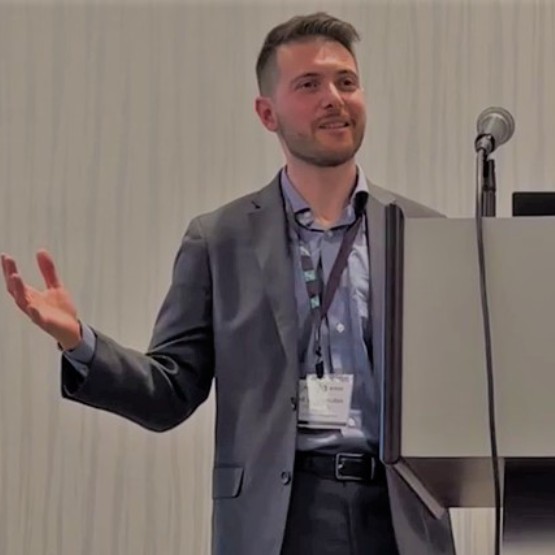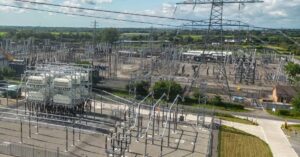

Rewriting the narrative: how the US is embracing grid enhancing technologies
July 19, 2023
Regions around the world are embracing the use of technologies that optimize the existing grid..but where is the US in this movement? In this article, Ted Bloch-Rubin discusses the progress of grid enhancing technologies (GETs) in the US and how recent infrastructure bills and federal support are turning the tide and positioning the US to make significant strides in the energy transition.

If the energy transition is a party, then the Australians invited everyone, the Europeans brought the crisps, and the Latin Americans were the first on the dance floor. But where is the US? Was our invitation lost in the mail? Ok, that’s a poor analogy and I’ve left out whole swaths of the globe making major strides in some areas.
Over the last six years at Smart Wires I’ve heard countless times, ‘grid enhancing technologies (GETs) seem like a no-brainer, when are we going to see them all over the US?’ I’d point to misaligned financial incentive structures here, and federal emphasis on grid efficiency elsewhere, and say — give us time! I’d explain that we need time to learn from our customers to bring the promise of GETs into the mainstream, both through legislation and technological pilot projects.
However, with numerous infrastructure bills in Congress – championed by Senators Heinrich, Manchin, Carper, and Hickenlooper and Representative Casten – directly calling for supporting and prioritizing projects that use GETs, I think we’ve put up the balloons. When a 138 kV pilot in 2019 becomes a 345 kV network upgrade in 2023, we’ve started mixing the drinks. Finally, when the Seventh Meeting of the Joint Federal-State Task Force on Electric Transmission focuses exclusively on GETs, well I’m out of party-based metaphors but clearly, we’re part of the global movement.
In recent transmission filings, FERC staunchly agrees that GETs, “maximize the transmission of electricity across the existing system.” Some of the more commonly known GETs, such as modular power flow control and Dynamic Line Rating, have been in use for the past decade and more. And while it’s great to see the buzz around these GETs in recent years, the scale of their impact tends to be largely absent from the conversation.
Take Smart Wires recent project in New York State with Central Hudson Gas & Electric. With just one substation deployment of devices, over 185 MW of capacity is unlocked. Significant increases in transmission capacity like this support the interconnection of multiple new large-scale renewable generation sites that otherwise may not be connected on time.
So what’s driving all this progress? A not-so-small group of innovative first-mover utilities, forward-thinking generation developers and large energy users, federal and state energy agencies and legislators, and a core group of university researchers. With the passage of both the Infrastructure Investment and Jobs Act (IIJA) in 2021 and the Inflation Reduction Act (IRA) in 2022, our industry received the kind of support and certainty not seen for over 20 years. Over $10B was allocated to the Department of Energy Grid Resilience and Innovation Partnership (GRIP) program, administered by the Department’s vaunted Grid Deployment . This investment is sure to advance countless grid modernization and decarbonization projects, catalyzing the affordable energy transition we so desperately need.
An important subset of GRIP, the Smart Grid Investment Grant matching program (SGIG), was re-funded with $3B, prioritizing investment in advanced power flow control projects. The first round of applications were submitted this past March and the second round is expected to open up by the end of the year. Joining forces with developers, utilities, universities, and research institutions, Smart Wires identified critical transmission projects across the US to help modernize the grid for the first round of funding, with several more planned for the second round.
While the US may have had to rely on a handful of bold gate-crashers embracing the potential of new technologies, I’m happy to say that I now answer the ‘when is the US coming to the party’ question quite differently. It is an exciting time to be part of the industry and with continued collaboration the US is positioned to make huge strides forward in the coming years, both for the transformation of the US grid and contributing to the global energy transition. We may have taken a while to arrive, but at least we’re bringing some new music and are here to stay.
Contributing expert
Ted Bloch-Rubin is Director of Business Development for the Americas at Smart Wires, engaging with stakeholders across North America to increase awareness of grid enhancing technologies and how utilities can use them to get more from their existing grids. Ted was Chair of the WATT Coalition for 2021/2022 and remains active in the association’s policy and advocacy work. Prior to joining Smart Wires, Ted worked with in the high-tech transportation industry.
For press related purposes, please contact us at marketing@smartwires.com.
Dive deeper into related content
Explore our products and services
Talk to our experts


